
Throughout the time I have worked as a Science Educator, I have worked on projects in my classroom and have tried to share these experiments with my colleagues through writings in various magazines and newspapers. Feel free to use this information as a guide with the students in your classroom. Life is an experience that needs to be shared with others.


 A Classroom To Grow On
A Classroom To Grow OnThis article looks at a fresh approach to the set up ans use of your classroom space.
 A Fresh Approach To Book Reports
A Fresh Approach To Book ReportsWe give books reports in Language Arts, but now with the CCLS standards, we should be taking a look at the use of was we can use texts in the science classroom. This Book Report format will allow for a different way to present information obtained from reading an informational text.
 Always Blowing Bubbles
Always Blowing BubblesThis is an article on making soap films and bubbles in the classroom.
 Top Secret Classified Information - Activities To Introduce Budding Zoologists To Animal Classification
Top Secret Classified Information - Activities To Introduce Budding Zoologists To Animal ClassificationThis article-science unit has students working on classroom activities to find out about how animals are classified.
 Assessing Students In A Hands-On Science Classroom
Assessing Students In A Hands-On Science ClassroomThis article gives ways to find out what the students in your class KNOW.
 Beach Bingo
Beach BingoThis is a seashore BINGO game designed for classroom use
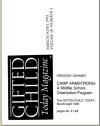 Camp Armstrong - A Middle School Orientation Program
Camp Armstrong - A Middle School Orientation ProgramThis article gives insite to a program that allows students to visit the school and make friends with their new classmates before the school year starts in a camp like setting just prior to the beginning of the new school year.
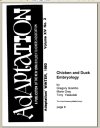 Chicken And Duck Embryology
Chicken And Duck EmbryologyThis is a classroom 21 to 28 day unit on chicken and duck embryology.
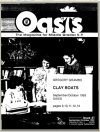 Clay Boats
Clay BoatsThis article - science unit has students trying to figure out how to make a denser than water object - float.
 Collect And Save Animal Tracks
Collect And Save Animal TracksThis article explains how to find animal tracks I nature and how to collect them using a plaster cast. The article also touches upon the use of a field guide.
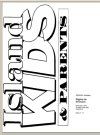 Digging Up Dinosaurs
Digging Up DinosaursThis article talks about dinosaur digs and how scientists discovered dinosaur remains. This article contains a paper template of a T-Rex dinosaur for students to cut out and assemble.
 The Einstein Times - Creating A Science Newspaper In The Middle School
The Einstein Times - Creating A Science Newspaper In The Middle SchoolThis article explains how to set up and put together a science newspaper in your middle school classroom.
 Fish Printing
Fish PrintingThe Japanese art of gyotako or fish printing will allow your students to really discover what a fish looks like. In this articke you will find out how to produce images of fish by inking their bodies and then transfering the ink to paper.
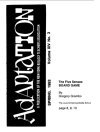 The Five Senses - Board Game
The Five Senses - Board GameYour students will learn about the five senses by building and blaying this board game.
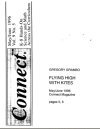 Flying High With Kites
Flying High With KitesThis article explains many types of kites, how to build them and experiment with them.
 Fun With Leaves
Fun With LeavesCollecting leaves, making rubbings, drawing pictures and identifying leaves are looked at in this article.
 Guinea Pigs
Guinea PigsThis article looks at guinea pigs as an animal in the wild and as a pet.
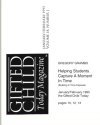 Helping Students Capture A Moment In Time - Building A Time Capsule
Helping Students Capture A Moment In Time - Building A Time CapsuleWhat is a time capsule and why do we make them? These ideas are covered in this articl along with what we learn when we dig up time capsules from the past.
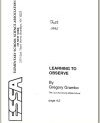 Learning To Observe
Learning To ObserveWhat do I really know about a dollar bill is show in this ESSA newsletter article on observation
 Learning To Observe
Learning To ObserveIn this article from Teaching K-8 we talk about the dollar bill experiment.
 Let Your Fingers Do The Walking - Investigating Science Through Fingerprint Activities
Let Your Fingers Do The Walking - Investigating Science Through Fingerprint ActivitiesThis article-science unit has students experimenting with fingerprints to really build their observation skills.
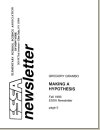 Making A Hypothesis
Making A HypothesisAfter you observe, what comes next? Can you make predictions based on your observations. This article shows a way of building hypothesis or inference skills.
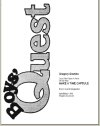 Making A Time Capsule - Sending The Future A Piece Of The Past
Making A Time Capsule - Sending The Future A Piece Of The PastThis article talks about time capsule and their importance in history. I explain how to build them and how to keep water and air out.
 Marbelized Paper - A Scientific Art
Marbelized Paper - A Scientific ArtOil and water do not mix. Density allows us to see oil floating on water. This article explains how to put oil based color onto water and then transfer the colors to paper. This paper can then be used for a variety of projects.
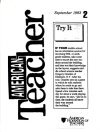 Middle School Orientation
Middle School OrientationThis short article in the AFT newspaper American Teacher tells about our schools summer orientation program for incoming students.
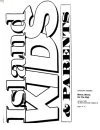 Mirror Mirror On The Wall
Mirror Mirror On The WallThis article show how to use mirrors in your classroom as a science tool.
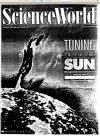 Nature You Can Wear
Nature You Can WearThis article on fish printing shows how you can produce prints on paper and shirts.
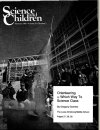 Orienteering or Which Way To Science Class
Orienteering or Which Way To Science ClassThis article explains how to use a compass and explains the process of orienteering.
 The Great Penny Experiment - Lesson Teaches Scientific Method
The Great Penny Experiment - Lesson Teaches Scientific MethodWhich penny will hold the most drops of water? Students try and then try again, they collect data make graphs and learn about the scientific method.
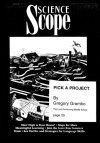 Pick A Project
Pick A ProjectThis article talks about the science fair.
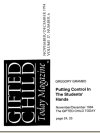 Putting Control In The Students Hands
Putting Control In The Students HandsThis article explains a way to set up a science classroom so that the teacher can circulate, ask questions and the children can have fun while learning.
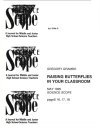 Raising Butterflies In Your Classroom
Raising Butterflies In Your ClassroomThis article has the teacher setting up an entomology project in the classroom raising caterpillers and butterflies.
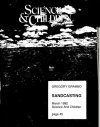 Sandcasting
SandcastingIf you can not bring your students to the seashore, why not bring the seashore to your students. A sand cast is a great way to capture the essence of the sand, grass and shells from the area.
 Science And Life
Science And LifeThis article talks about working with the things children are interested in and bringing those iseas into your classroom.
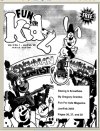 Seeing A Snowflake
Seeing A SnowflakeThis article explains what a snowflake is and how to capture and collect a snowflake.
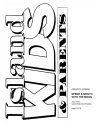 Spend A Month With The Moon
Spend A Month With The MoonThis article explains how the moon moves in relation to the earth and has an activity where your students draw the daily image or phase of the moon for a month.
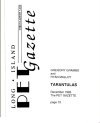 Tarantulas
TarantulasThis article talks about this spider and how it can be kept as a pet.
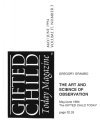 The Art And Science Of Observation
The Art And Science Of ObservationLearning how to really look at an objet is discussed in this article. How is on object percieved in relation to another. Are the eyes really that far up on the head in the drawing you are about to make? Did you measure everything? Learning to look is important.
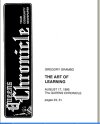 The Art Of Learning
The Art Of LearningThis article touches on the types of learners - visual, auditory and tactile.
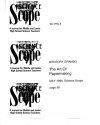 The Art Of Papermaking
The Art Of PapermakingAncient Rome, ancient egypt, ancient greece - Did we always have paper? This article talks about the importance of paper and explains how you can make it in your classroom.
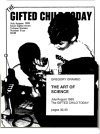 The Art Of Science
The Art Of ScienceThis article talks about how the science classroom and art classroom should be set up and run in a similar manner.
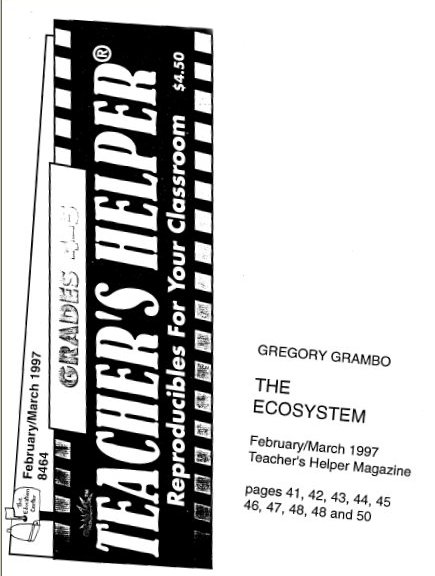 The Ecosystem
The EcosystemThis article - science unit has students finding out about communities, food chains and how animals and plant interact with each other in the environment.
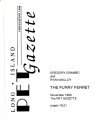 The Furry Ferret
The Furry FerretThis article talks about ferrets and how you can keep one as a pet.
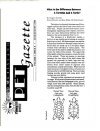 What Is The Difference Between A Tortoise And A Turtle?
What Is The Difference Between A Tortoise And A Turtle?This article talks about how to tell the difference between these animals if you come across them in nature.
 Using Fall To Design Activities
Using Fall To Design ActivitiesFall brings with it sights, sounds and smells that you can use in your science classroom to help foster learning.
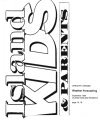 Weather Forecasting
Weather ForecastingThis article will have you building weather instruments and collecting weather data.
 We DIG - School Archeology Projects You Can Do At Your School
We DIG - School Archeology Projects You Can Do At Your SchoolThis article goes into projects you can do in a grassy area on your school property or a classroom activity that has children excavating bones from a plaster cast.
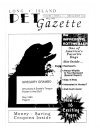 Why Does A Snakes Tongue Flicker In And Out?
Why Does A Snakes Tongue Flicker In And Out?This article explains how the snake uses its tongue to smell.